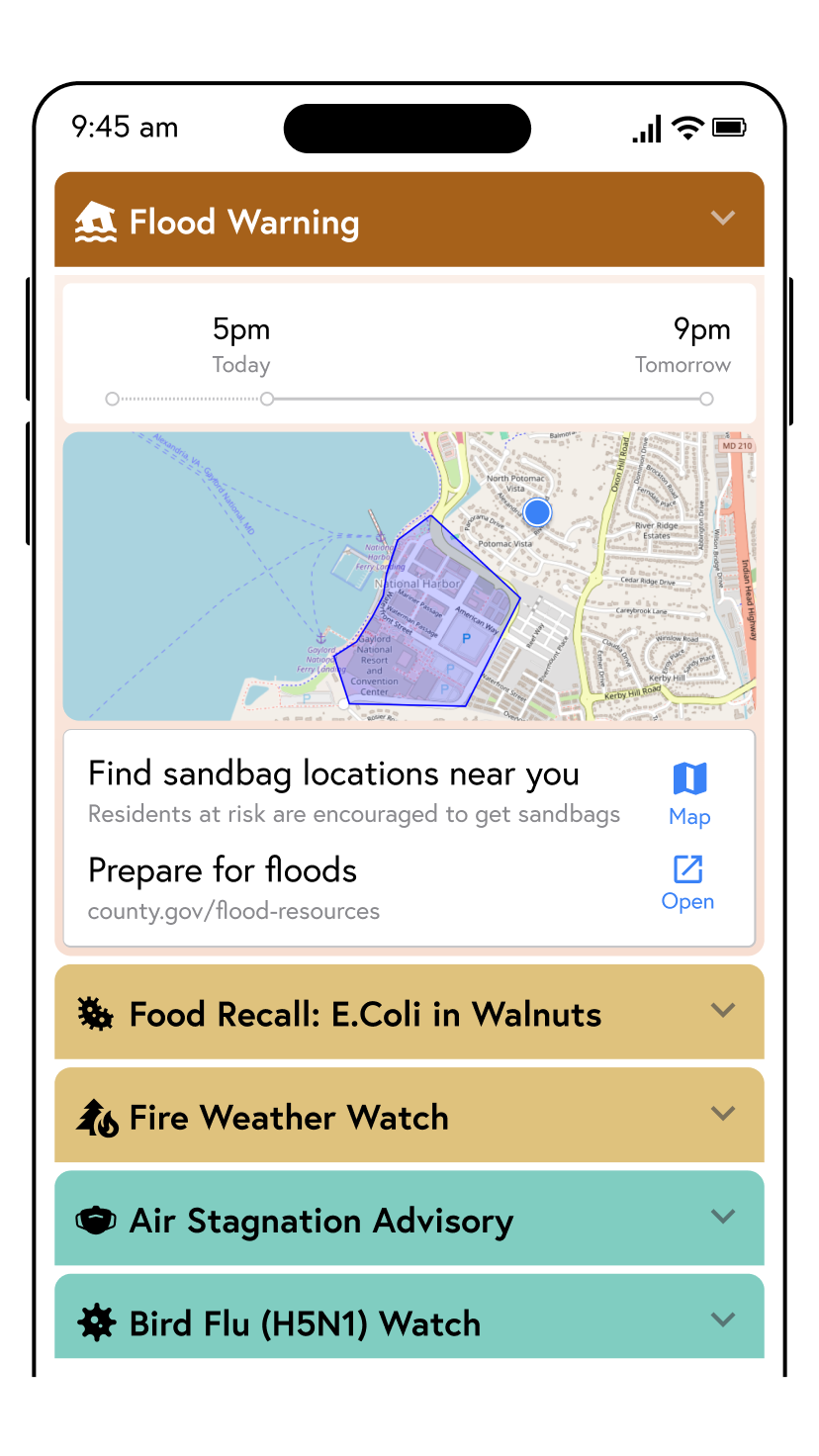FOR AGENCIES
Modern Public Engagement Platform
Reach everyone you serve in 50+ languages, through a 2-way communication channel across SMS, email, app, and web


THE PROBLEM
Fragmented systems, language gaps, and broken feedback loops
One‑way alerting, language barriers, and siloed tools create operational risk, compliance exposure, and delayed response.
THE SOLUTION
One source of truth for multilingual, two-way communication
Verified alerts in 50+ languages and multi‑channel delivery from one source of truth with two-way intelligence


Faster publishing, deeper engagement, quicker incident response
Reduce multilingual translation time, drive engagement with relevant resources, and speed incident response with pre‑approved templates and action plans
Prepare, Monitor, Respond, Improve
A continuous readiness loop: configure guidance ahead of time, monitor conditions, respond in minutes, and improve with every event


Designed for Accessibility
WCAG 2.1 AA, senior‑friendly, optimized for low‑literacy and emergency use
Multilingual across all channels
50+ languages with human approval, optimized for public communication across all channels


Cross-organization collaboration
Invite team members from multiple organizations to collaborate and coordinate on content, messaging, and reporting

Seamlessly integrates with existing workflows.
Link from existing channels like IPAWS, mass notification, social, etc. without re‑sending; API‑first interoperability includes FHIR, SSO, CAP/IPAWS. No rip‑and‑replace.

COMING SOON

Community-led Governance, Privacy‑by‑Design, and Responsible AI
As a public benefit corporation we are committed to responsible AI, privacy-first design, accessibility-focus, and active co-development with public universities, agencies through Wehealth® Forum

—

—

—
Start Free, Grow as You Go
Begin at no cost, upgrade for customization, branding, SMS, reporting, and support based on transparent pricing and no hidden costs

Frequently Asked Questions
For Public Agencies
-
What is the Portal?
The Portal is a powerful, real-time platform exclusively for public agencies and government officials to monitor, analyze, and respond to emerging threats. It provides an integrated dashboard consolidating critical data streams, advanced risk stratification for targeted interventions, multi-hazard monitoring and response coordination, anonymous population targeting for tailored recommendations, and mobile optimization for field decision-making. The Portal equips decision-makers with data-driven tools to protect communities when it matters most.
-
How can my agency use the Portal?
Public health departments, emergency management agencies, and other government entities can use the Portal to monitor health and safety threats, coordinate responses, analyze risk patterns, and communicate with communities through PHapp. The Portal delivers real-time situational awareness and analytical capabilities for proactive preparation, calibrated responses, and measurable outcomes across treatment protocols, risk reduction strategies, preparedness initiatives, and crisis management—all within a single, streamlined interface.
-
Can my organization partner with Wehealth?
Yes! Wehealth welcomes partnerships with grant-making organizations, academic institutions, public health agencies, and community organizations. Partners can join the Forum—a collaborative community where experts influence the product roadmap, participate in research projects, and shape the development of key initiatives. Forum members gain insider access to preview upcoming features, engage in discussions, and contribute to solutions that make a real-world impact. Contact us to learn about partnership opportunities.
-
What are the costs for agencies using the Portal?
The Wehealth Portal is sustained through grant funding and partnerships. Contact us to discuss access and partnership opportunities for your agency.
The Magic Module
Congrats! You've just become a magician. This is the do-it-all module where you can let your creativity run wild. The best part is that it's just going to keep getting more and more awesome over time.